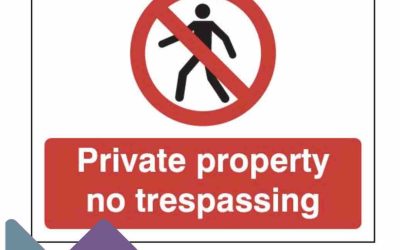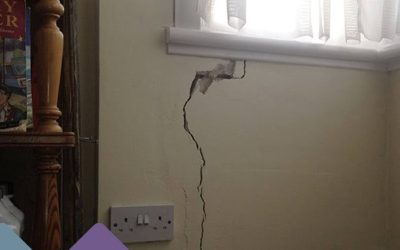Today, we are going to be looking at Party Wall Notice consents, and why at Stokemont we believe them to be a rare occurrence.
A Party Wall Notice is the legal notification that is required when a building owner is undertaking works to their property.
The Party Wall etc. Act 1996 requires the building owner to serve a Party Wall Notice upon the adjoining owner, a minimum of one or two months in advance of the proposed construction works commencing.
It is not uncommon, or rare, for adjoining owners to choose to dissent to the Party Wall Notice and require the input of a Party Wall Surveyor.
In many cases this dissent will come as a shock or a surprise to a building owner, as they had been expecting the adjoining owner to issue a straightforward consent in response to the Party Wall Notice.
Through this blog post, we are going to be looking at this scenario and setting out our take on it.
The first thing to note, is that an adjoining owner opting to dissent to the Party Wall Notice is rarely out of spite, or in an attempt to delay or stall the works.
Instead it is usually just a result of them wanting to ensure their property as full legal protection that the Party Wall etc. Act 1996 provides to them.
The procedures as set out by the Party Wall etc. Act 1996 broadly speaking are as follows.
Party Wall Surveyor Review
A Party Wall Surveyor, once appointed which comes by virtue of a Party Wall dissent, would then be duty bound to ensure that the risks associated with the building owner’s construction works are at the lowest possible level they can be.
The Party Wall Surveyor will ensure this duty is met, by implementing procedural aspects to the works that will lower the short and long term risk upon the adjoining owner, and the adjoining owner’s property.
Schedule of Condition Reports
Schedule of Condition reports are required when a Party Wall Notice dissent is received.
A Schedule of Condition will involve the Party Wall Surveyor visiting the adjoining owner’s property prior to the building owner’s works commencing, to undertake a full and comprehensive record of that property.
That record therefore acts as a body of proof and evidence in the event of any future damage allegations, or damage claims.
An oddity of the Party Wall etc. Act 1996, is that it doesn’t actually spell out the requirement for a Schedule of Condition report.
However all of the leading governing bodies including the RICS (Royal Institute of Chartered Surveyors) all set this out within their guidance notes.
Our take on it here at Stokemont, is that the Schedule of Condition report is one of the most important aspects and parts of the Party Wall Surveying procedures, as ultimately it not only gives the surveyor the opportunity to get to site, it also ensures that he or she is fully aware of the property’s condition through works.
Party Wall Awards
A Party Wall Award, also commonly referred to as a Party Wall Agreement, is the legal document that concludes the Party Wall procedures.
The award itself, first and foremost gives the adjoining owner legal protection above and beyond common law. However, it also legally protects the building owner in the event of any issue, such as an improper damage claim.
Party Wall Awards will also govern and set out the proposed works that are being undertaken, and will regularly include protective provisions that have been designed by the Party Wall Surveyor or Party Wall Surveyors to consider and reduce the overall work risk.
Post Work Inspection
The final element of the party wall procedures is a Party Wall Surveyor’s post work inspection.
During this inspection, the Party Wall Surveyor will check off, or sign off, the original Schedule of Condition report. The aim being to inform the building owner, and adjoining owner respectively as to whether any damage has occurred.
In the unfortunate event that damage does occur, the Party Wall Surveyor would then determine the extent of that damage, followed by the determination of the quantum.
This would then be presented to the building owner, for their contractor to either repair and make good the adjoining owner’s property. Alternatively, to provide the adjoining owner with a payment in lieu, or cash settlement, for them to then employ their own contractor to remedy the defects that have been caused.
Hopefully, it is now clear and evident why Party Wall Consents are rare. In dissenting to a Party Wall Notice, the adjoining owner is ensuring that they gain the full protection that the law, and the Party Wall etc. Act 1996 affords to them.
Here at Stokemont, over the years, we have dealt with all different types of Party Wall works, from your minor, to your major. One common theme to all of these Party Wall Awards, is that an adjoining owner will want to ensure that they are given full assurances and protections when it comes to their property.
If you would like to discuss Party Wall Surveying procedures with our team of qualified and experienced party wall surveyors here at Stokemont, give us a call today and we would be more than happy to discuss and advise.




